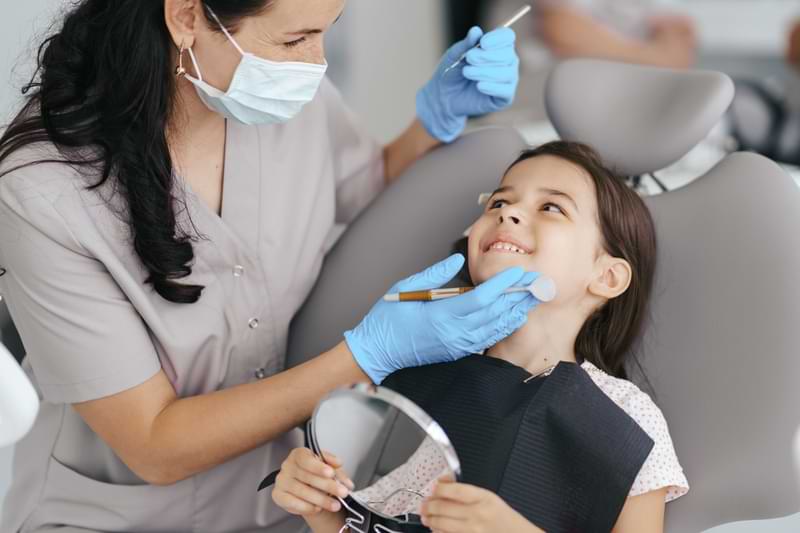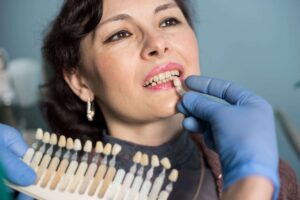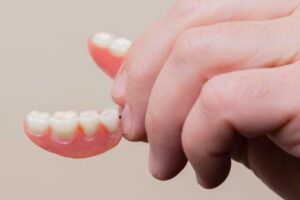Dental Care for Children & Teens: How To Help Them Develop Healthy Habits & Smile Confidently?

Dental Care for Children & Teens: How To Help Them Develop Healthy Habits & Smile Confidently?
If you’re looking for paediatric dentistry in Berwick, Langmore Dental is the clinic you should consider. Catering to infants, teens and in-betweens, we are a Berwick dental clinic that not only offers paediatric dentistry but also excels in it. If you’re wondering how to teach your children the basics of oral hygiene and nutrition from an early age, establishing regular dental visits is a fantastic start. Let’s continue the conversation and discuss how you can help kids develop healthy habits from infancy and continue to smile confidently into adulthood.
How To Teach Your Children the Basics of Oral Hygiene & Nutrition From an Early Age?
Teaching your children the basics of oral hygiene begins the moment their first tooth comes through. When that first tooth erupts, that’s your sign to pick up the phone and book your child’s first dental appointment. Parents may be surprised to learn that children should see the dentist by age one — or two, at the very latest. So long as you have at least one tooth — yes, prosthetic teeth count — you’re eligible for a dental checkup!
As you may already know, regular dental checkups are a critical component of oral hygiene. Children and adults alike should visit the dentist once every six months for a checkup. If you establish this routine with your child from day dot, you’ve already normalised a large aspect of dental care. Our Berwick dental clinic is also a fantastic space for our paediatric dentists to educate children and encourage healthy dental habits.
Aside from normalising dental visits early on, how else can you educate your children in oral hygiene and nutrition during the formative years? Let’s take a look!
Introduce Brushing & Flossing Immediately
Before your child’s first teeth erupt, you should give their gums a gentle wipe with a damp cloth. Just because they don’t have teeth yet doesn’t mean you can’t be mindful of oral bacteria! When the teeth do come through, that’s your cue to brush them using an infant toothbrush, water and a dab of fluoride toothpaste — no larger than a grain of rice. Once two teeth make physical contact with each other, that’s a sign it’s time to start flossing!
Once your child turns two, you should teach them to spit after brushing, though you should avoid teaching them to rinse using water at this stage. The reasoning behind this is that rinsing may encourage them to swallow the toothpaste, and this is the last thing you’d want. Once they turn three, you can upgrade to a pea-sized amount of toothpaste per brush, though you should always supervise your child’s dental routine until they’re about eight. You want to ensure they don’t swallow the toothpaste!
Model Teeth-Friendly Snacking
You are your kids’ strongest role models, so another great way to teach oral hygiene and nutrition is to lead by example. When it’s snack time, you should bring fresh fruits and vegetables, sugar-free dairy products, and nuts to the table. Respectively, each aforementioned food category is high in fibre and water, high in calcium, and low in carbohydrates — and each of these attributes is great for teeth cleaning, teeth strengthening, and lowering the risk of cavities compared to higher-carbohydrate options. While you shouldn’t necessarily place a blanket ban on sugar, there’s no denying that lollies, fruit roll-ups, biscuits and cake can literally stick around and wreak havoc on the teeth.
If your child uses a sippy cup, we would also recommend filling it with water, which will strengthen enamel (thanks to its fluoride content) and rinse away cavity-causing food particles. From a dental perspective, fruit juice can be just as harmful as cordial as these drinks contain a similar amount of sugar. While fruits are a fantastic snack, it’s best to consume them as nature intended. Not accounting for any added sugars, juicing fruits removes the fibre and water content that makes them so teeth-friendly.
How To Make Dental Visits Fun & Positive for Your Children & Teens?
There is a world of difference between a child’s and a teen’s brain, so it’s difficult to give advice that will work for everyone along the spectrum of under-18s. Let’s work through some strategies, some of which will work for the younger ones and some of which will work for those developing their independence.
1. Describe Dentistry Using Positive Language
Children catch onto things more than you may realise. In this case, if you experience dental anxiety yourself, your child may not only notice this but internalise it themselves. To avoid this, you should choose your words carefully when you’re discussing paediatric dentistry or heading to our clinic in Berwick. Use positive language, feign enthusiasm if you must, and avoid discussing anything negative about dentistry, if you can do so. If your child observes an outward state of calm from you, they’ll have no reason to worry.
2. Open a Dialogue
It’s important to ensure that your child is in on the fact they’re attending the dentist. That said, you want to get the timing right. If you tell them mere minutes before the appointment, they’ll have zero time to prepare and potentially associate more anxiety with the dentist. However, if you tell them too far in advance, they could be battling anxiety and dread for days. We would recommend introducing the idea on the morning of their appointment, giving them space to ask their questions. While it’s important to be honest, you should also avoid triggering words including ‘hurt’ or ‘pain’.
Of course, if you’re parenting a teenager, there will be no need for such secrecy. In fact, you should consult with them before booking an appointment. As emerging adults, teenagers will appreciate being included in the discussion as it shows you respect their independence and time. You should also make it clear that you’re happy to discuss anything relating to the dentist or their upcoming appointment.
3. Respect Privacy
Adolescence is an awkward time of intense growth spurts and poor body image. Teens may have concerns about how their teeth appear or about particular habits they may prefer to discuss privately. If your teen would prefer to speak one-on-one with a dentist or hygienist for whatever reason, you should respect their right to privacy if appropriate. Beyond dentistry, this also shows that you respect your teen’s agency and boundaries, which may strengthen your relationship in the long run.
4. Introduce Books & Videos About Going to the Dentist
Books and TV shows educate kids about many important topics, and going to the dentist is often one of them. For younger children especially, there’s something comforting about seeing their favourite character go to the dentist and have a good experience. If you can find picture books or episodes of their favourite show where a character attends the dentist, this may inspire your child to reframe any anxiety they’re experiencing. Even if this doesn’t inspire positive feelings, it can still be an excellent way to familiarise them with their upcoming experience and learn about what to expect.
5. Roleplay a Dental Appointment
Roleplaying is a common way for children to experiment with real-life situations and varying perspectives. Perhaps the most common example is when children play ‘house’, each assuming different familial roles in created scenarios. Because roleplaying allows children to ‘road-test’ situations in a safe environment, it can be the perfect entry point for familiarising them with their upcoming dental appointment.
Here’s how you can introduce the idea in a fun way:
Instruct your child to sit in their chair as you pretend to be the dentist. To build believability, you should hold your child’s toothbrush as you play out the scenario, which involves counting and brushing your child’s teeth. As you do this, provide clear explanations of what you’re doing and why oral hygiene is important. You may not be a dentist, but you can be whatever you want in a make-believe land.
Once you’ve played out the scenario, either switch positions or have your child play ‘dentist’ for one of their soft toys. By letting them assume both roles, they’ll both understand what to expect from their appointment and also feel more in control. There’s also something comforting about watching an adult go through what they’re about to go through. Repeat the roleplay however many times you want! There are no rules or limitations to a child’s imagination.
How To Encourage Your Children & Teens To Take Care of Their Teeth & Gums & Avoid Bad Habits
Of course, it’s all well and good to know how to teach your children the basics of oral hygiene and nutrition from an early age, but you need to also keep the momentum going into their teenage years. Once your child’s permanent teeth come through, instilling lasting oral hygiene habits will be more critical than ever. While often viewed as boring ‘life administration’, dental hygiene is something you can certainly encourage, so let’s take a look at how you can do this.
1. Let Them Make Dental Care Choices
One of the perks of being a kid is you can choose a colourful toothbrush with your favourite character on it! You can also choose brightly coloured toothpaste in flavours that aren’t mint, the latter of which can taste too strong in a child’s mouth. Take your child to the shops and let them choose a toothbrush in their favourite colour, as well as a fun fluoride toothpaste in their favourite flavour. Letting your child choose what they use may mean they’ll feel more enthused to take care of their teeth and gums.
Though teenagers won’t want children’s toothbrushes, you can still allow them to make their own dental care choices. They may want a particular whitening toothpaste or a specific brand of toothbrush. Letting them take control over this aspect of their health shows that you value their input and respect their independence.
2. Keep a Routine
Fact: routines provide the structure we often need to succeed. By establishing brushing and flossing as an integral part of their morning and evening routines, you help kids to maintain dental hygiene with consistency, to the extent that it becomes automatic rather than something they need to remember. Set a specific time to brush and floss — it doesn’t necessarily need to be an exact time, but saying you should always brush ‘after breakfast’ or ‘before bed’ can help to create the habit.
3. Book a Paediatric Dental Appointment Every 6 Months
Speaking of routines, it’s important for everyone — regardless of their age or how many teeth they have — to attend the dentist for a checkup once every six months. If your child has dental issues or anxiety, their dentist may advise they come in every three months to track the issue(s) or break down the anxiety via exposure, but you can determine each case however you see fit. Overall, visiting the dentist often is an important part of taking care of your teeth and gums. Book appointments often and you’re training your child to continue attending the dentist into adulthood.
4. Provide Healthy Snacks
We discussed modelling healthy snacking earlier, but the reality is that sugar will almost inevitably tempt your kids as they grow older. To reinforce that the aforementioned should be ‘sometimes’ foods, you should fill school lunchboxes with veggie sticks, fruit, nuts, cheese sticks or sugar-free yoghurt. Moreover, you should banish soft drinks from your shopping list, as even the sugar-free varieties are acidic enough to compromise teeth.
For the same reason you shouldn’t fill a sippy cup with fruit juice, it’s also best to avoid putting Pop Tops in lunchboxes. Save it as a special treat for home, where your kids can brush their teeth in the hours following consumption.
What Are the Common Dental Issues & Treatments for Children & Teens & How To Prevent Them?
In reality, children and teens are just as susceptible to common dental issues as adults are, but some lifestyle factors may make some kids particularly vulnerable to particular conditions. Let’s take a look.
1. Tooth Decay
Most kids have a sweet tooth, so it’s important to be mindful of their sugar intake, as too much too often can cause tooth decay. The first sign of tooth decay is when teeth develop a dull, white band along the gum line. You might also see brown spots on the teeth, and the gums might be red and swollen. If your child does experience tooth decay or cavities, you should get them to a dentist for either tooth extraction or dental fillings.
2. Dental Trauma
If your child plays sports, they may run a slightly higher risk of sustaining dental injuries than average. A fantastic way to prevent dental trauma is to wear a mouthguard, ideally alongside protective gear such as a helmet. If your child’s mouth has taken a hit, the appropriate course of action will likely depend on whether the dentist is dealing with deciduous or permanent teeth. Tooth extraction may be the easy answer for the former, but dental bonding or a crown may be something to consider in the case of the latter. Speak to your dentist for the best advice.
3. Bruxism (Teeth Grinding)
Did you know that one in five children aged eleven or younger will experience bruxism — aka teeth grinding during sleep? Bruxism can rear its ugly head due to dental misalignment, pain (e.g. earaches or teething), stress or specific medical conditions (e.g. cerebral palsy). If stress is the culprit, you should try your best to address potential stressors, perhaps starting by facilitating a relaxing bedtime routine. If grinding persists or becomes severe, wearing a nightguard to bed can help prevent dental damage.
4. Malocclusion (Dental Misalignment)
Malocclusion, aka dental misalignment, seems to be more common in childhood than in any other life stage. While often a genetic condition, malocclusion can also develop due to thumb sucking or tongue thrusting. If your child does any of the above, it may be time to address these habits and train them to stop. If malocclusion becomes an issue, you may need to seek advice from an orthodontist or consider orthodontic appliances, such as Invisalign or braces. In our clinic at Berwick, dental braces are certainly an option you’re welcome to explore.
How To Deal With Braces, Retainers & Other Orthodontic Appliances for Your Children & Teens
If you’ve decided to investigate orthodontic appliances, our Berwick clinic offers dental braces and Invisalign treatment. What you choose for your child or teen ultimately depends on their preferences.
1. Invisalign
Invisalign is the modern-day answer to braces. Many people prefer it due to its aesthetics — and the fact that you can remove it from your mouth. While braces can draw attention to themselves, Invisalign is made from a clear plastic that you’d have to squint to notice. Braces also have the unfortunate side effect of catching hard-to-remove food particles, whereas Invisalign remains pristine as you remove it to eat and drink. (Important: ensure your child wears Invisalign for at least 22 hours per day, or else the treatment won’t work as fast as it’s supposed to.)
While Invisalign has aesthetics and removability on its side, the drawback is it requires more admin than its ‘train-track’ counterpart. With Invisalign, your child would need to swap the moulds over every two to three weeks, as well as brush their teeth following every instance of food or drink consumption (water excepted) before placing Invisalign back in the mouth. For someone attending school, this may prove inconvenient. However, Invisalign does have a faster turnaround time than braces (six to eighteen months versus one to three years).
2. Braces
The classic choice, braces shift teeth thanks to their handle and flexible wires. Not unlike Invisalign, braces are customisable; in fact, they require a dentist’s prescription to work their magic. At Langmore Dental in Berwick, we offer stainless steel or metal dental braces, which are the smallest, strongest and most stain-resistant variations on the market. They’re also the least prone to discolouration, as well as the most cost-effective option. If your child is concerned about aesthetics but you’re not convinced about Invisalign, we also offer clear ceramic braces: the most subtle braces available.
Unlike Invisalign, which you would need to change every two to three weeks, braces stick for the whole 1.5- to three-year duration of the treatment — though they will require adjustments every four to six weeks. Moreover, though braces demand less daily dental maintenance than Invisalign, they may prove more difficult to clean.
3. Weigh Up the Pros & Cons With a Professional
If you or your child are unsure which pros outweigh the cons or vice versa, you are more than welcome to book a free consultation at our Berwick dental clinic. Whether you want to discuss orthodontic solutions or investigate general paediatric dentistry in Berwick, we are more than happy to clarify your concerns and organise your child’s first appointment with us.
Paediatric dentistry casts a wide net, and we hope this blog post has been a testament to our expertise. Book your child in for a consultation or checkup with one of our paediatric dentists at Langmore Dental.








